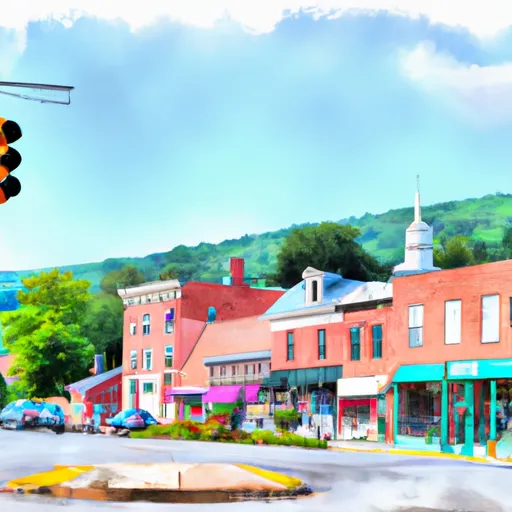-
 Snoflo Premium
Snoflo Premium
Get unlimited access to all our content
With no Ad interruptions! - Start Your Free Trial Login with existing account
Bellows-Falls
Eden Index
Climate
8.1
•
Recreation
2.8
•
Community
2.3
•
Safeguard
4.8/10

Bellows Falls is a small town located in southern Vermont, with a population of around 3,000 people. The climate in Bellows Falls is characterized by cold winters and warm summers, with an average annual precipitation of around 44 inches. The town is situated along the Connecticut River, which is an important water resource for the area. The river also provides opportunities for outdoor recreation, such as fishing, kayaking, and canoeing. The town is also home to numerous parks and nature preserves, including the Bellows Falls Fish ladder and the Rockingham Recreation Trail. Additionally, the town is known for its historic downtown area, which is home to several unique shops and restaurants.
What is the Eden Index?
The Snoflo Eden Index serves as a comprehensive rating system for regions, evaluating their desirability through a holistic assessment of climate health, outdoor recreation opportunities, and natural disaster risk, acknowledging the profound impact of these factors on livability and well-being.
Climate Health Indicator (CHI): 8.1
Bellows-Falls receives approximately
1110mm of rain per year,
with humidity levels near 78%
and air temperatures averaging around
8°C.
Bellows-Falls has a plant hardyness factor of
5, meaning
plants and agriculture in this region thrive during a short period during spring and early summer. Most
plants will die off during the colder winter months.
By considering the ideal temperature range, reliable water supplies, clean air, and stable seasonal rain or snowpacks, the Climate Health Indicator (CHI) underscores the significance of a healthy climate as the foundation for quality living.
A healthy climate is paramount for ensuring a high quality of life and livability in a region, fostering both physical well-being and environmental harmony. This can be characterized by ideal temperatures, reliable access to water supplies, clean air, and consistent seasonal rain or snowpacks.
Weather Forecast
Streamflow Conditions
Upper Connecticut
Area Rivers
Upper Connecticut
Snowpack Depths
Upper Connecticut
Reservoir Storage Capacity
Upper Connecticut
Groundwater Levels
Recreational Opportunity Index (ROI): 2.8
The Recreational Opportunity Index (ROI) recognizes the value of outdoor recreational options, such as parks, hiking trails, camping sites, and fishing spots, while acknowledging that climate plays a pivotal role in ensuring the comfort and consistency of these experiences.
Access to outdoor recreational opportunities, encompassing activities such as parks, hiking, camping, and fishing, is crucial for overall well-being, and the climate plays a pivotal role in enabling and enhancing these experiences, ensuring that individuals can engage in nature-based activities comfortably and consistently.
Camping Areas
| Campground | Campsites | Reservations | Toilets | Showers | Elevation |
|---|---|---|---|---|---|
| Barton Cove | 30 | 206 ft | |||
| Mt. Ascutney State Park | None | 518 ft | |||
| Quechee State Park | 55 | 638 ft | |||
| Erving State Forest | 29 | 610 ft | |||
| Storrs Pond Rec Area | 30 | 591 ft | |||
| Wheelock Park Campground | None | 540 ft | |||
| Fort Dummer State Park | None | 562 ft | |||
| Silver Lake State Park | 40 | 1,385 ft |
Nearby Ski Areas
Catastrophe Safeguard Index (CSI):
The Catastrophe Safeguard Index (CSI) recognizes that natural disaster risk, encompassing floods, fires, hurricanes, and tornadoes, can drastically affect safety and the overall appeal of an area.
The level of natural disaster risk in a region significantly affects safety and the overall livability, with climate change amplifying these risks by potentially increasing the frequency and intensity of events like floods, fires, hurricanes, and tornadoes, thereby posing substantial challenges to community resilience and well-being.
Community Resilience Indicator (CRI): 2.3
The Community Resilience Indicator (CRI) recognizes that education, healthcare, and socioeconomics are crucial to the well-being of a region. The CRI acknowledges the profound impact of these elements on residents' overall quality of life. By evaluating educational resources, healthcare accessibility, and economic inclusivity, the index captures the essential aspects that contribute to a thriving community, fostering resident satisfaction, equity, and social cohesion.

